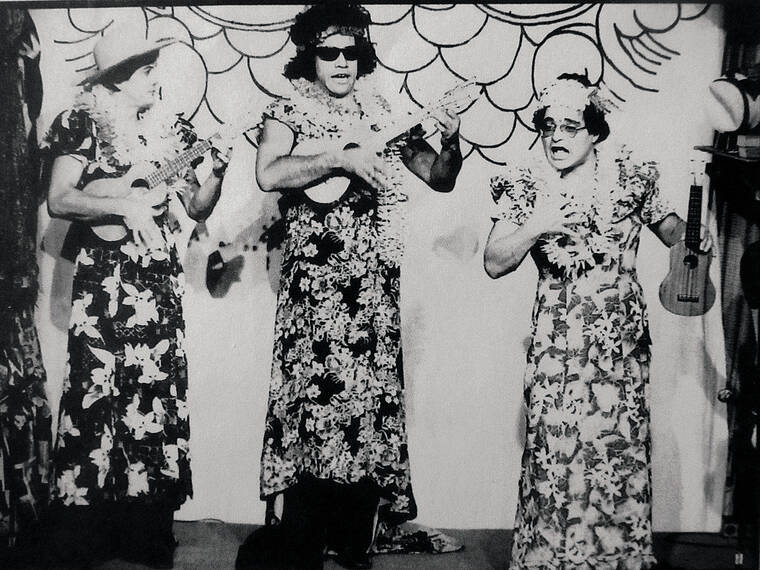Hawaii’s Plantation Village volunteer Yoshiko Yamauchi tends to plants traditionally used for medicinal purposes
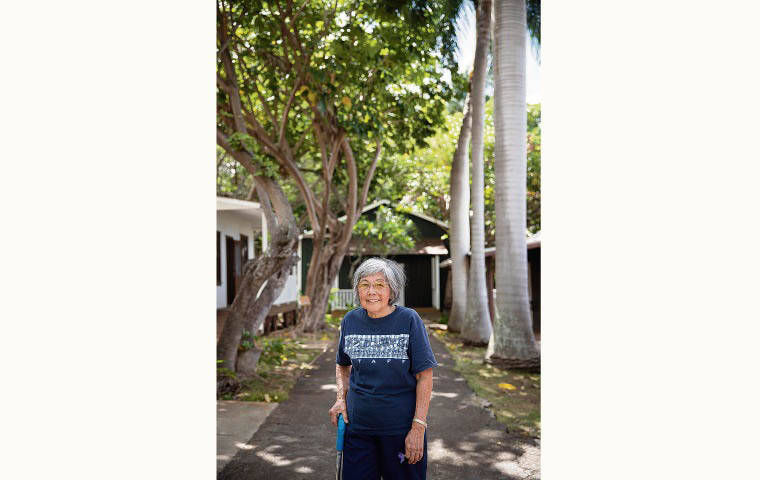
CINDY ELLEN RUSSELL / CRUSSELL@STARADVERTISER.COM
Yoshiko Yamauchi, a retired teacher and longtime volunteer at Hawaii’s Plantation Village in Waipahu, is affectionately known as “the plant lady.” She helped plan the gardens surrounding several homes representing each ethnic group.
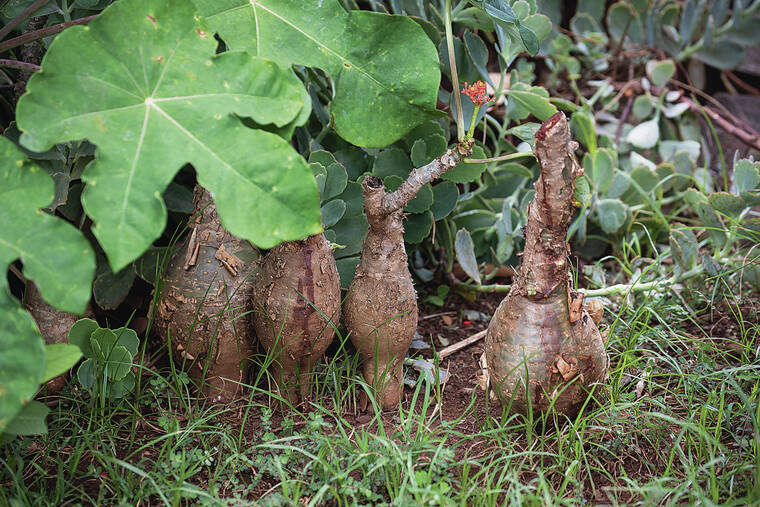
CINDY ELLEN RUSSELL / CRUSSELL@STARADVERTISER.COM
Jatropha podagrica, commonly known as gout plant, Buddha’s belly bush or Coral plant. The succulent gets the name of gout plant from its bulbous base or caudex. It was used in liniment to relieve pain.
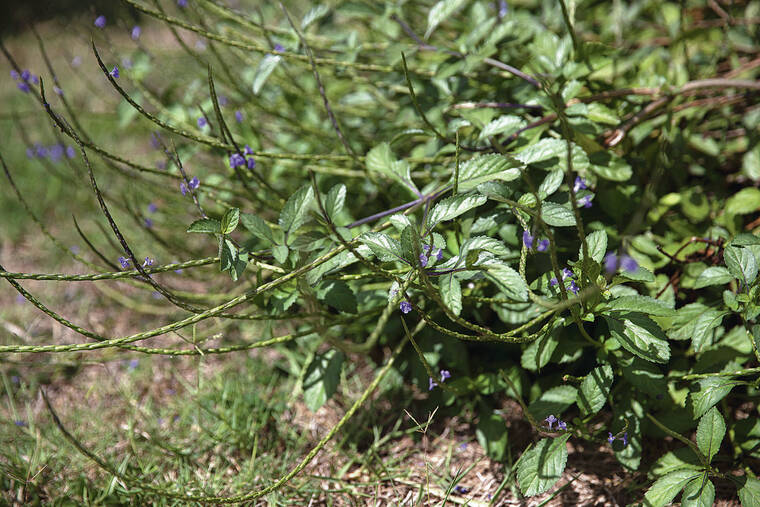
CINDY ELLEN RUSSELL / CRUSSELL@STARADVERTISER.COM
Pictured is the Haowi plant.
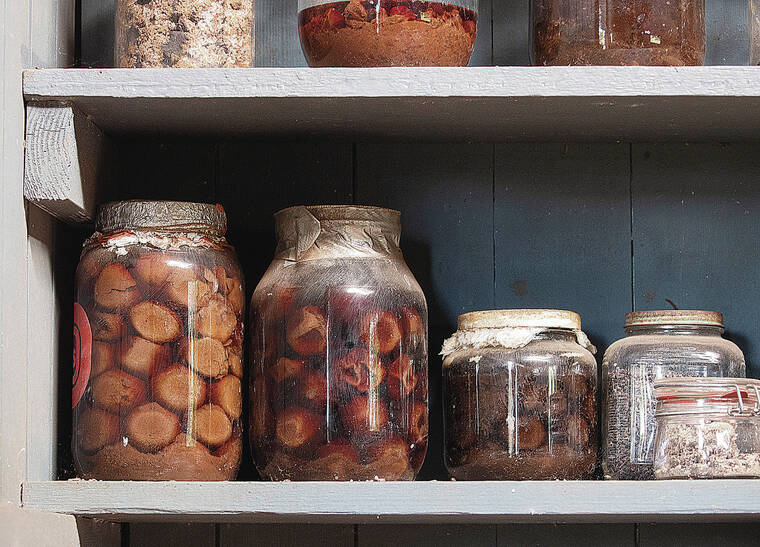
CINDY ELLEN RUSSELL / CRUSSELL@STARADVERTISER.COM
During the plantation era, many plants were prepared in traditional ways by various ethnic groups. These decades-old jars of preserved lemons in the Chinese cooking house are one example.
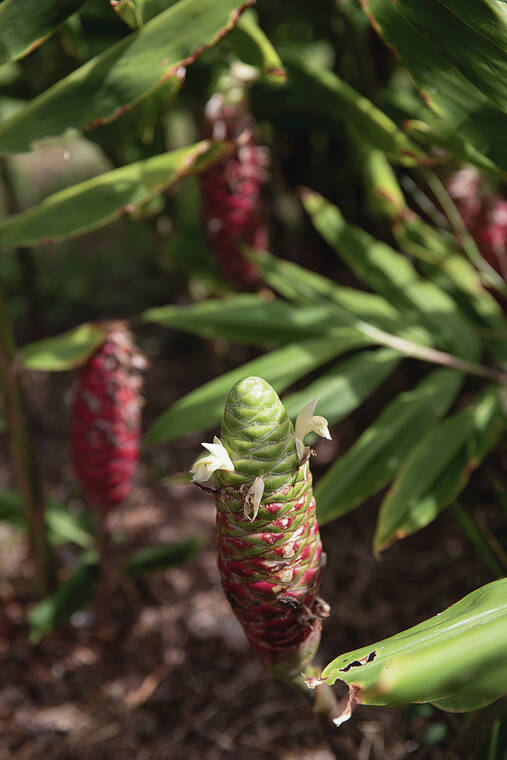
CINDY ELLEN RUSSELL / CRUSSELL@STARADVERTISER.COM
Awapuhi kuahiwi is native to India and related to ginger. This plant is common in damp, open forests forming a continuous ground cover.
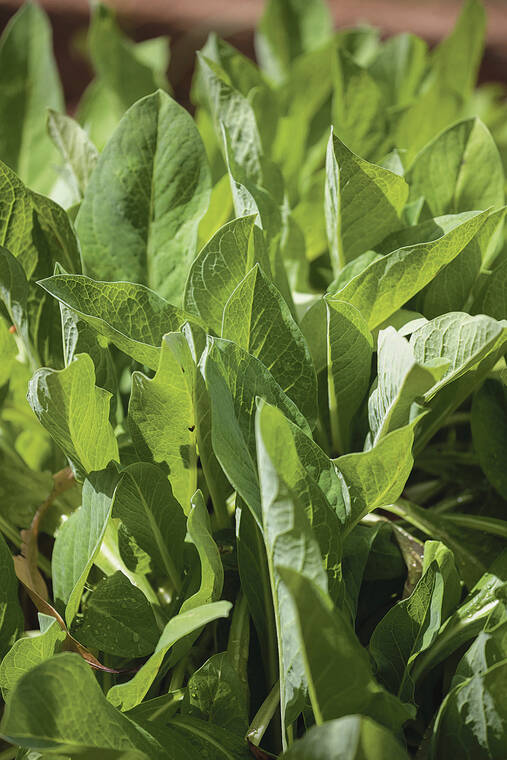
CINDY ELLEN RUSSELL / CRUSSELL@STARADVERTISER.COM
Pictured are leaves of bitter cabbage in the Okinawan garden.
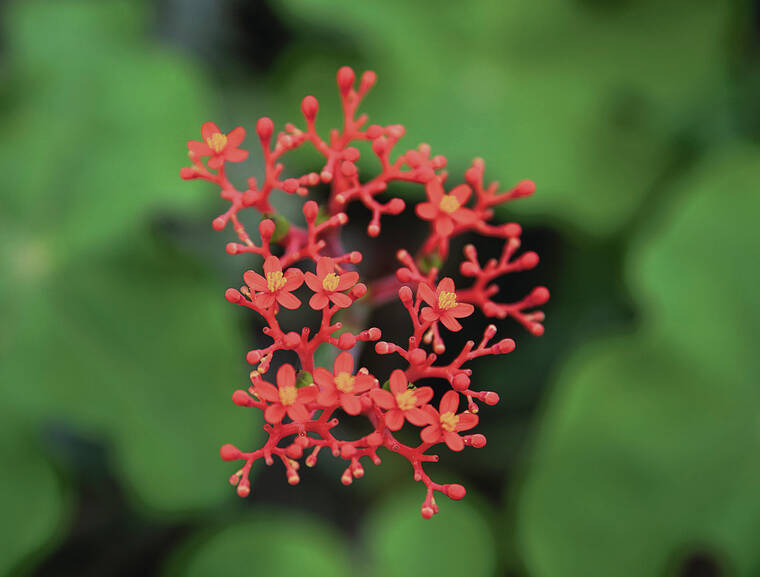
CINDY ELLEN RUSSELL / CRUSSELL@STARADVERTISER.COM
Jatropha podagrica, commonly known as gout plant, Buddha’s belly bush or Coral plant. The succulent gets the name of gout plant from its bulbous base or caudex. It was used in liniment to relieve pain.







Tours of the historic houses are the highlight of Hawaii’s Plantation Village museum in Waipahu, but garden lovers would have a field day just learning about the backyard plants that were important to the well-being of different ethnic groups.
An assortment of vegetables and other plants were grown not only for nourishment and health, but for medicinal or hygienic purposes traditional to each culture. During the plantation era (1900s-1950s), sugar cane laborers led a hardscrabble existence and were forced to make do with the resources around them. They used their knowledge of plants to supplement Western medicine, which early immigrants weren’t familiar with.
Groups included Native Hawaiians, but most were immigrants of Chinese, Japanese, Filipino, Korean, Okinawan, Portuguese and Puerto Rican descent.
“The beauty of the period is they shared whatever knowledge they had,” said Yoshiko Yamauchi, a retired teacher and longtime volunteer at the village, who is affectionately called “the plant lady.”
Yamauchi has worked at Hawaii’s Plantation Village since it opened in 1992 and helped lay the groundwork for the gardens with input from each group. Retiring in 1996, she’s been a volunteer at the museum ever since. These days, slowed by arthritis in her 80s, Yamauchi traipses steadily through the grounds with a cane twice a week to maintain the gardens on top of tending her own vegetable plot at home.
Every which way she turns at the cultural village, Yamauchi points to a tree or plant and rattles off information about its origin and multiple uses — chances are, she’s either made a liniment or tea out of one or the other, or tried cooking a dish.
Don't miss out on what's happening!
Stay in touch with breaking news, as it happens, conveniently in your email inbox. It's FREE!
She’s made it easy for garden aficionados to take self-guided tours by labeling and providing a bit of background for each plant, attached to weather-beaten sign posts.
“It gives you an idea of what plantation life was like in the early days, how important gardens were to the individuals because it helped to sustain their health, they could have clothing, and medicine,” she said. (Plants used for clothing included the cotton tree and the wauke plant that Native Hawaiians used to make tapa.)
One of the stories passed down to her by old-timers included a classic example of adaption involving the Chinese, who weren’t familiar with Western medicine. They didn’t realize they were supposed to swallow pills whole from Western doctors. So like the herbs they ground and boiled for health purposes, they crushed the pills and mixed them with water to drink like a tea, Yamauchi said.
Versatile lemon grass
“My favorite multiethnic use plant is lemon grass,” Yamauchi said.
While the entire stalk of the grass is used for flavoring food, it was probably the Chinese who started boiling the leaves for tea, which they believed helped blood pressure, cough and lung infections, and problems involving the stomach, colon, bladder and liver.
Yamauchi gives high marks to the tea as a remedy for cough: “One day I tried it and it really worked.” To make it, she bends and ties five or six long leaves together so it fits into a pot, and simmers them until the water gets “not too dark.”
She found it intriguing that lemon grass seemed to be the only plant that certain ethnic groups kept using for traditional purposes, though overall they gradually adopted each other’s practices and the different uses of the same plants.
The Chinese believed women who just gave birth had to wait a month before taking a bath, Yamauchi said. They added lemon grass and ginger root to water for that first bath because it was very calming and pain-relieving.
Portuguese women added leaves to their hot mop water for the fresh fragrance, something like the original Pine-Sol; and Filipinos used the entire plant as a flavoring to eliminate the smell of meats, she said.
While lemon grass has a wide range of uses, there are a number of other plants grown at the museum that are used in various cultures (see sidebar).
Always an educator
In addition to her vast knowledge of plants, Yamauchi’s background in education made her a natural to work with student visitors and school groups, which she did when she was on the HPV board.
In 1994, Yamauchi helped Waianae High School students, assisted by Leeward Community College pupils, create a separate community herb garden. It showcases a number of plants shared by many ethnic groups and acts as a overview of what plantation life was like, she said. She divided them into sections according to their predominant purposes: skin problems, teas to sustain health, overall wellness, spiritual offering and flowers grown for health purposes.
“I started from ground zero and it allowed me to do whatever I wanted,” she said. “Teaching about plants, I saw it made a difference in their (students’) lives.”
The students went home and talked to their parents or grandparents about what they learned about plants. Their grandparents would respond with stories of their own, and then the students would write or call the village staff about what their families remembered.
“It was a full circle thing. … You could see the transfer of knowledge, not only that (their grandparents) could live it but the children would remember it for life,” she said.
—
The Power of plants
Here are some of the plant varieties and their traditional uses grown at Hawaii’s Plantation Village:
>> Laukahi: Filipinos used it for toothaches; Japanese ate it in tsukemono; and Native Hawaiians used it as a liniment for rashes or boils.
>> Mugwort: Koreans ate “ssuk,” believing it cleansed the blood, and also as a moxa treatment for strengthening the body’s energy flow; Okinawans baked “yomogi” into pound cake and added it to stir-fries; and Japanese used “fuchiba” in mochi.
>> Jatropha, or coral plant: The early Chinese used it in liniment for bruises and small cuts. But don’t eat it — the entire plant is poisonous if ingested. Yoshiko Yamauchi, who once used it on her own injured foot, said, “It works! The swelling went down, no black and blue and I could walk at the end of the day, no problem. So I’m a believer!”
>> Ti and noni leaves: It was “common knowledge” that both relieve muscle and back pain. Yamauchi just sprinkles water on a whole leaf, microwaves it for 10 to 15 seconds and lays it on her skin: “Wow! It really works, the heat somehow penetrates. Leave it on until the heat dissipates. Most of the time, just one application does it.”
>> Haowi plant (Verbena litoralis): Hawaiians and Chinese used it for healing broken bones (only simple fractures). They added salt to mashed leaves and flower buds and applied the pulp to the break; ti leaves were used as bandages to keep the pulp in place. The paste could also be applied to infections, bee stings, scorpion and centipede bites, and bruises.
>> Ilima flower: Commonly used for sewing lei, Native Hawaiians used it to sustain health. “The ilima is my favorite because it’s the first solid food the baby ate. Mom would cook the flower and chew it, then feed her baby,” Yamauchi said.
>> Awapuhi ginger: Early Hawaiians squeezed the sudsy, slimy juice of the flower head for shampooing or quenching their thirst. Ashes of awapuhi root were used to treat cuts and sores. Stems were infused and applied for stomachache. Salt was added to the infusion and applied to the area that was painful.
>> Bitter spinach or cabbage: Okinawans used “nigana” to help alleviate stomach ailments, colds and fever.
>> Bitter melon (goya): Okinawans believed eating bitter foods would help keep them cool during hot weather, Yamauchi said.
>> Nabera: The cucumberlike gourd is eaten by the Okinawans, while the Japanese dried it and used it as a loofah sponge.
—
Hawaii’s Plantation Village
94-695 Waipahu St.
Info: 808-677-0110; hawaiiplantationvillage.org Opens in a new tab
Is there a gardening topic you’d like to read about in the Garden Variety column? Email Pat Gee at pgee@staradvertiser.com.

